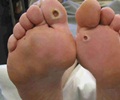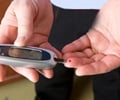Can sitting increase mortality risk for diabetics? Yes, but regular physical activity can help counteract this risk.
- Prolonged sitting significantly increases mortality risk in adults with diabetes
- Achieving 150 minutes of physical activity per week can lower this risk
- Small, consistent lifestyle changes can have a big impact on health.
Sitting Time and Its Interaction With Physical Activity in Relation to All-Cause and Heart Disease Mortality in U.S. Adults With Diabetes
Go to source).
Just standing up every 30 minutes can improve circulation and reduce the risk of blood clots- especially important for those with diabetes! #diabetescare #health #medindia’
Link Between Sitting Time and Mortality Risk
Physical inactivity is a known risk factor for various chronic conditions, including heart disease, obesity, and type 2 diabetes. However, for people with diabetes, the consequences of prolonged sitting are even more severe. The study utilized data from the 2007-2018 National Health and Nutrition Examination Surveys (NHANES), which included over a decade of data on U.S. adults aged 20 and up, all of whom had diabetes.Researchers found that adults with diabetes who spent eight or more hours sitting each day had a significantly higher risk of all-cause mortality compared to those who were more active. Specifically, individuals who were classified as "inactive" and sat for long periods had a 73% increased risk of all-cause mortality. Even those who were "insufficiently active" had a 74% higher risk.
Physical Activity is a Lifesaver for Diabetics
Contrary to some earlier studies, this research highlights the importance of physical activity in mitigating the risks associated with prolonged sitting. Participants in the study were grouped based on their self-reported activity levels into three categories: inactive (less than 10 minutes of exercise per week), insufficiently active (10-149 minutes per week), and active (150 minutes or more per week).The results clearly showed that those who achieved at least 150 minutes of physical activity per week were less likely to die from any cause, including heart disease, compared to those who remained inactive. This finding underscores the critical role of physical activity in diabetes management and overall health.
Dangers of a Sedentary Lifestyle
For many people, prolonged sitting is an unavoidable part of daily life, especially for those who work in office settings or have jobs that require extended periods of inactivity. However, this sedentary behavior poses a significant threat to individuals with diabetes.Dr. Sandra S. Albrecht, the senior author of the study, explained that prolonged sitting can disrupt blood flow, particularly to the lower body, increasing the risk of blood clots. These clots can lead to severe complications such as heart attacks and strokes. Additionally, sitting for long periods can slow blood flow, promote plaque buildup in blood vessels, and increase insulin resistance—all of which contribute to the heightened mortality risk in diabetics.
Role of Diet and Lifestyle in Diabetes Management
In addition to reducing sitting time, effective diabetes management involves a combination of factors, including regular medical check-ups, medication adherence, and maintaining a healthy diet. Dr. Jason Ng, a specialist in endocrinology and metabolism, emphasized the importance of a balanced diet in reducing mortality risk among diabetics.A diet high in unhealthy fats, sugar, and salt can exacerbate the complications of diabetes, leading to higher blood pressure, elevated cholesterol levels, and increased risk of heart disease. Conversely, a diet rich in whole foods, fruits, vegetables, and lean proteins can help manage blood sugar levels and reduce the risk of premature death.
Practical Tips for Reducing Sitting Time and Increasing Activity
For those who find themselves sitting for long periods due to work or other commitments, there are several strategies to incorporate more movement into daily life:- Take Breaks: Set a timer to remind yourself to stand up and move every 30 to 60 minutes. Even short breaks can help improve circulation and reduce the risk of blood clots.
- Incorporate Physical Activity: Choose activities that you enjoy and can commit to regularly. Whether it's walking, cycling, dancing, or gardening, any form of physical activity is beneficial.
- Make Active Choices: Opt for stairs instead of elevators, walk or cycle instead of driving when possible, and consider standing or walking meetings to reduce sitting time.
- Adjust Your Workspace: If possible, use a standing desk or a desk converter that allows you to alternate between sitting and standing throughout the day.
- Engage in Hobbies: Find hobbies that require physical movement, such as hiking, swimming, or playing a sport, to keep yourself active outside of work.
Reference:
- Sitting Time and Its Interaction With Physical Activity in Relation to All-Cause and Heart Disease Mortality in U.S. Adults With Diabetes - (https://diabetesjournals.org/care/article-abstract/doi/10.2337/dc24-0673/156982/Sitting-Time-and-Its-Interaction-With-Physical)
Source-Medindia












